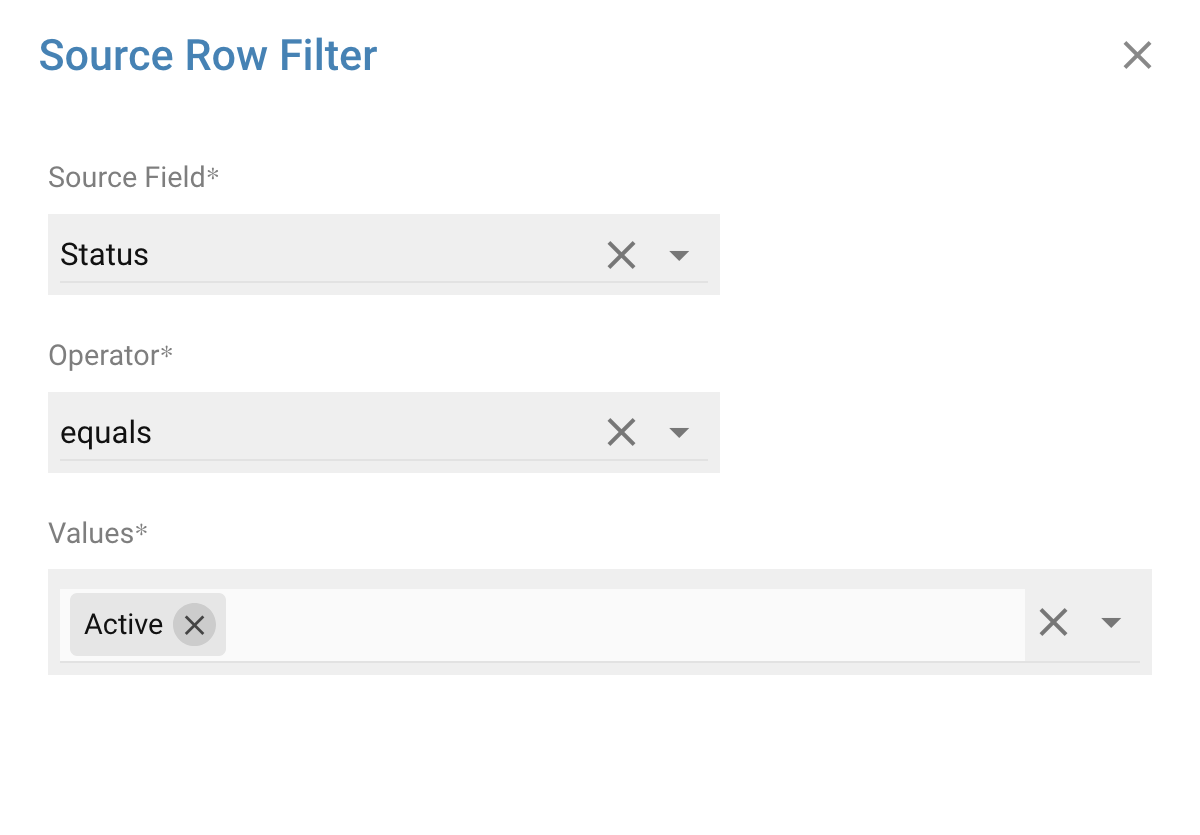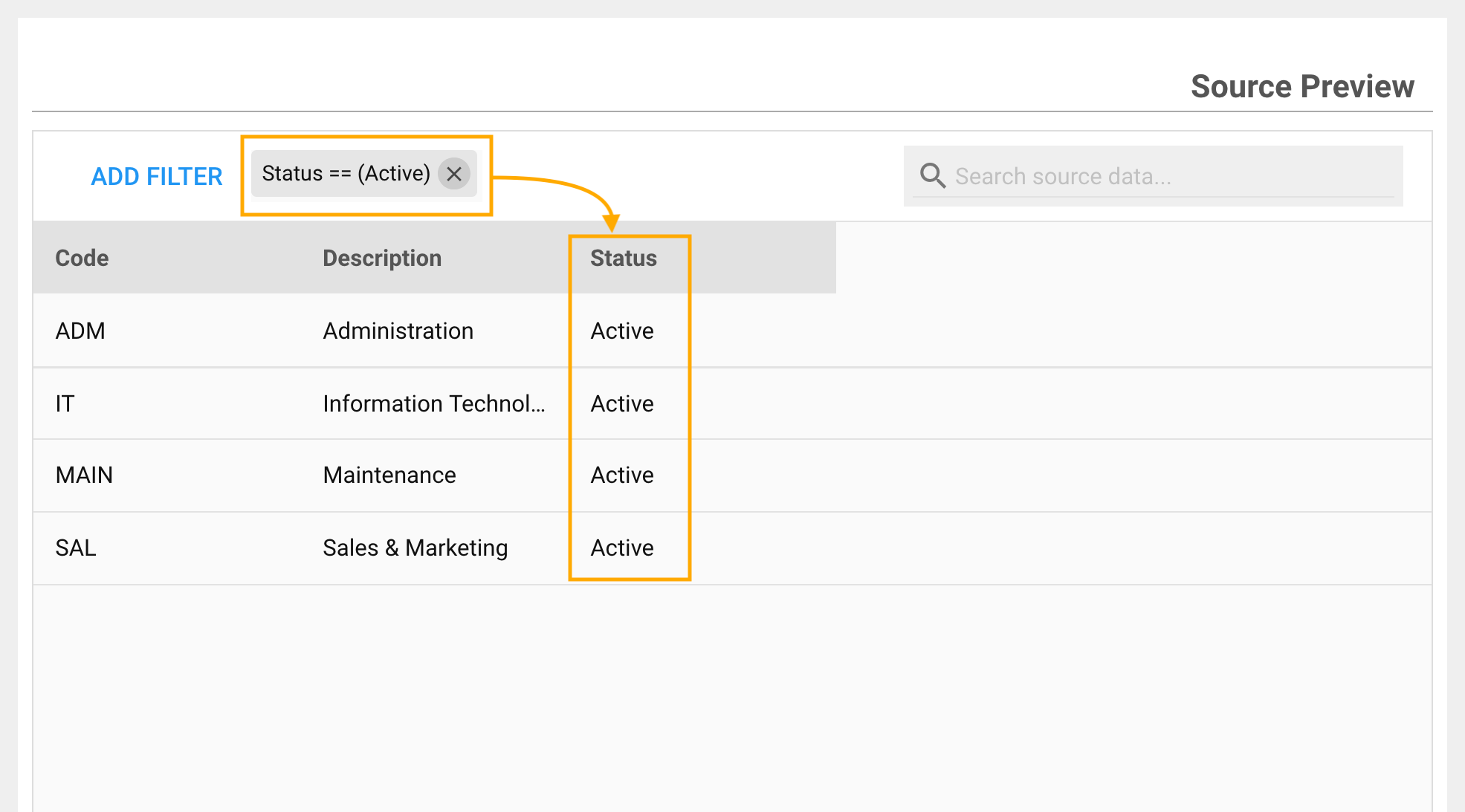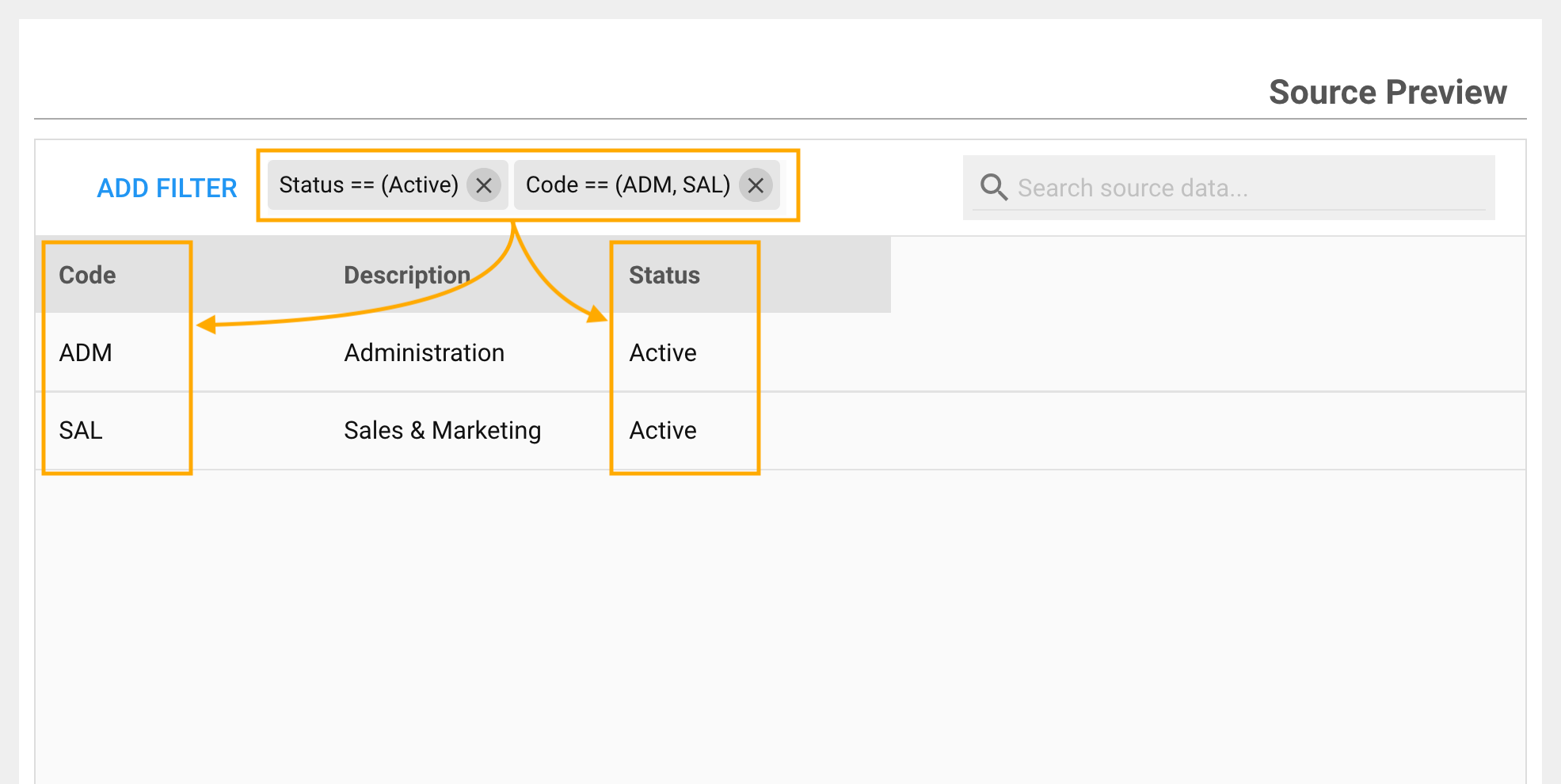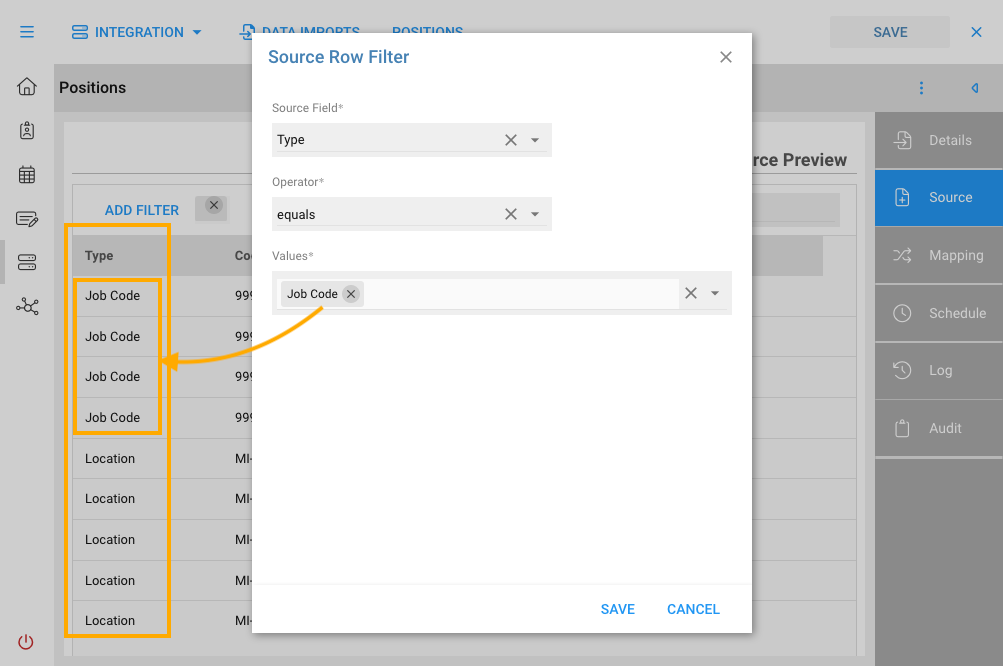Source & Filtering
The Source action tab provides an useful interface for previewing the entirety of the source data, such as to search for rows/values, and to filter rows so-as to only include the rows matching specific criteria in the import process.
Searching
A helpful use-case is determining if the desired data is present in the file when debugging data import issues. Results are displayed as you type.
Use the Search box in the upper right to search on any column in the source file
Filtering
Filters work to restrict which rows are included in the data import. For example, in our Departments list, you could exclude any row that is no longer Active.
Add a Filter
Press the ADD FILTER button to create a new filter

In the Source Row Fitler dialog, fill-in the following parameters:
| Item | Description |
|---|---|
| Source Field | Select the field to filter upon. You may filter on multiple fields by adding multiple filters (but only one field per filter) |
| Operation | Choose from equals, does not equal or contains |
| Values | Choose one or more values from the dropdown list |
Operators
The Operators have the following characteristics:
| Operator | Notes |
|---|---|
equals | The source field must exactly match one of the provided Values; comparison is not case-sensitive, so you can search for Value, VALUE or value; also, no quotes are needed to separate search items |
does not equal | The opposite of the above, the source field must not match any of the provided Values |
contains | The source field must contain one of the provided partial Values; this is different than equals in that the search value can be a partial match to the source; comparison is not case-sensitive |
Values
Values are populated in the drop-down based on the selected Source field. The values drop-down will allow multi-select when a small/discreet number of unique values are available. If the number of unique values is greater, the Values field reverts to a simple text edit. In this case, type a space or comma separated list of values, such as:
value1, value2, value3
..or..
value1 value2 value3
Filter Evaluation
When applied, the source data is filtered and the non-matching rows eliminated (in this case the one with a Status of Inactive:

Add additional filters to further reduce the source rows. For a row to pass filtering, it must pass all filter rules (collective AND). Multiple filters, each with optional multiple values, are processed as:
SourceField1 EQUALS ANY OF (value1a, value1b, value1c..). // IN (SET)
AND
SourceField2 EQUALS ANY OF (value2a, value2b, value2c..). // IN (SET)
...
Adding a second filter to the above example reduces the result further; in this case searching for Code matching either of ADM or SAL:

Quotes are never used when writing rules or filters.
The above example is somewhat counter-productive, as the second filter on Code is targeting two unique values, so the filter on Active is less meaningful. Normally filters would operate on more generalized data. such as the case whereby different datatypes are present in the same file (say Departments, Locations, Jobcodes, etc).
You would create three separate Imports to handle the three different data types and resultant targets; in each import the filter evaluates against the Type column to only include the rows needed for the current import:

After applying filters, you can repeat sample searches using the Search box to test the filter results; searches are performed against the filtered rows, not the original dataset.
Removing Filters
To remove a filter, simply press the X on the filter expression at the top of the data grid. The filter is removed and the source data re-presented based on any remaining filters.
Next we'll look at field Mapping.